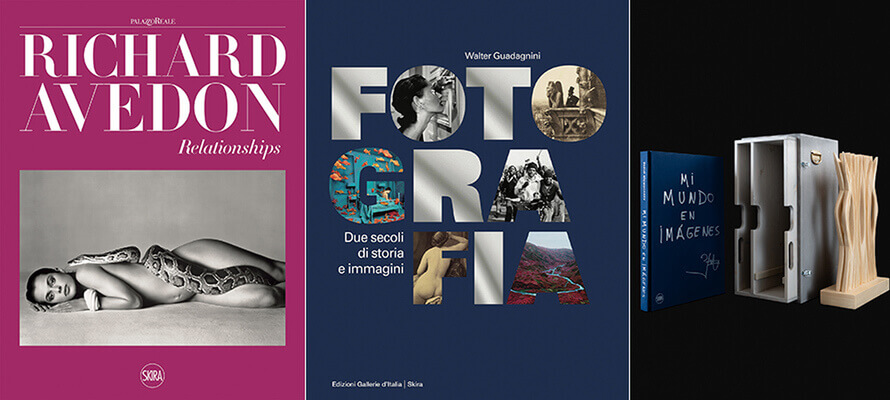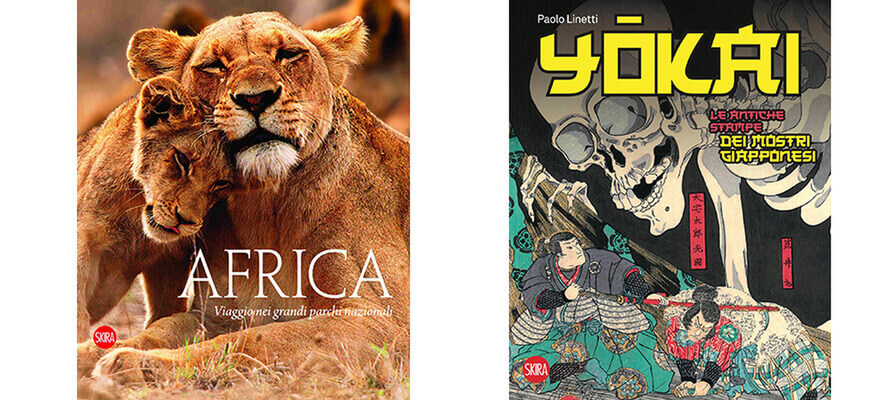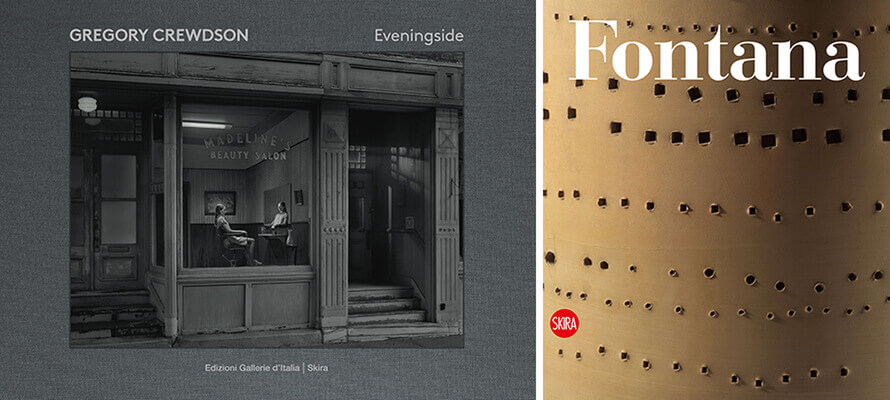Skira, avant-garde publishing
More than a publishing house, a legend approaching the century mark. We interviewed Pietro Della Lucia, Publishing Director of Skira, which since its foundation, has never stopped creating innovative volumes capable of telling the story of art together with artists.
By Michela Pibiri | On PRINTlovers 97
Skira is a publishing house founded in the era of the 20th-century avant-garde with the collaboration of many influential artists. What has remained of the original soul, and what has changed over almost a century of life?
In less than half a decade, we will be 100 years old. A milestone that only companies capable of reading their own time manage to achieve. When the young Albert Schira founded his publishing house in Paris in 1928, he immediately wanted to work with the greats. It took him a good three years before he could print his first volume: Ovid's Metamorphoses, illustrated by Pablo Picasso. Today - in a world that has espoused the love of speed preached by the avant-garde of the 20th century - Skira stubbornly pursues being at the side of artists and art institutions in the creation of exceptional volumes capable of wresting words and images from the passage of time that would otherwise be lost.
Skira continues to play a leading role in the world of art publishing. What does it require to be competitive in this market today?
There is no real recipe. But the ingredients that cannot be lacking are reactionary capacity, quality, internationality and diversification. Making an important book is always an undertaking, and both those who undertake it several times a year and those who tackle it once in their lives want to feel genuinely accompanied, listened to and guided. This is why the people who make up the Skira team are the company's flagship. Quality is another crucial aspect. Obviously, that of production, which cannot be disregarded in products that remain on the market for years and years, but also that of thought in the construction of the publishing project. Skira has also always had in its DNA an international dimension, more necessary today than ever before. The publishing house's international impetus is more alive than ever because of the French Chargeurs Museum Studio Group, which Skira joined last summer. Through our offices in Milan, Geneva, Paris and London, we work with museums, galleries and international artists and truly tell the story of art and cultures worldwide. A final key aspect is diversification. Skira, known globally as a publisher, is also one of Italy's leading producers of temporary exhibitions and runs more than 20 museum and temporary exhibition bookshops.
One of the trademarks of the publishing house has always been the very high quality of the publishing products and the care for printing. What are the ingredients for the production of a high-quality volume?
The product's final quality is the result of a long process where personal expertise and the comparison between colleagues play a pivotal role. First, the ability to read the expressive needs of the materials in the volume and make the right choices in the technical specifications. The format - which makes the character of the work clear even when the book is closed - is crucial, as is the choice of paper, cover or type of printing. Skira prints almost exclusively in Italy, and today the quality is generally very high; so what makes the difference between a good and an excellent job is the offset and the pre-printing. Phases that must be followed obsessively.
How do you choose your suppliers of substrates, printing and bindery?
As I said, we print almost exclusively in Italy and mainly in northern Italy. Since we have to produce nearly 200 new products a year - primarily concentrated in the last two months of the year - we need a relatively large and reliable pool of suppliers. So there are printers who have been working with us for over 15 years, constantly looking for new ways to display their excellence. In terms of our production, there are, of course, projects that require a strong price-quality ratio and where speed of execution is paramount - such as exhibition catalogues - and others where production excellence alone is the driver. The most delicate and challenging volumes for us are those of photography, especially when the photographer is alive, where the artist's work and its reproduction in the book are conceptually almost overlapping.
Exhibition catalogues, monographs, coffee table books and limited editions. How are high-end works created, and to which public are they addressed?
Skira is the only publisher in the Altagamma Association, which brings together Italian luxury brands, and we have always collaborated with that world continuously. We are the publishers of the volumes of Cartier, Bulgari, Ferragamo, Loro Piana, Ferrari, Lamborghini, Van Cleef & Arpels, to name but a few. These are books that, from a technical point of view, have to meet the highest quality requirements and therefore require a great deal of creative and production effort. But the real difference in corporate publishing Skira makes is in the thinking through of an original and culturally complex publishing project. We are cultural excellence, and making volumes of simply beautiful images is not our job. By publishing the book with Skira, these great companies associate themselves with luxury and the charm of culture. With us, they have a partner capable of telling their story, their product, and their leading players, with a new, high-culture slant. The world of limited editions has rules all its own and interlocutors who are attentive to every aspect: from the choice of the artist to the packaging, to the quality of the artwork contained and the price in relation to the market. Skira usually starts with an existing publishing product and works with the artist directly on the creation of a work or multiple and unique, luxury package. For example, in the volume entitled Painting the Stage, which dealt with the relationship between artists and theatre sets, we set the book and the silkscreens of international artists such as Kentridge, Fabre and Kabakov in a wooden box designed by Mario Botta that took up the idea of a theatre backdrop.
Is there a particularly relevant collector's project that you would like to tell us about?
I would choose the most recent, the limited edition made in collaboration with the internationally renowned artist Pablo Atchugarry, because it gives a good idea of how we work on different fronts. Skira brought all its know-how to bear and supported the artist both in the production of a major exhibition in the Sala delle Cariatidi at the Palazzo Reale in Milan and in the production of the exhibition catalogue and bookshop for sale, as well as a limited edition out of format (40x60 cm) with an original wood sculpture that sold for almost €20,000.
The world of art publishing, and publishing in general, is facing significant challenges related both to digital communication and the increasing costs of production and raw materials. What perspectives and plans for the future does the publishing house have?
The figures speak for themselves: the illustrated volume on paper is not replaceable by any digital edition. Those who love art books also want to enjoy the tactile aspect and - why deny it - use them as furnishing objects. For Skira, digital - assuming it is possible to unite all elements under one generic name - is not an enemy. Quite the opposite. It is a valuable ally in communication and an engine of development for new frontiers. In fact, we are ready to launch a vast and, in some ways, revolutionary project of blockchains and digital certificates of artists who have created their catalogue of works with us.





